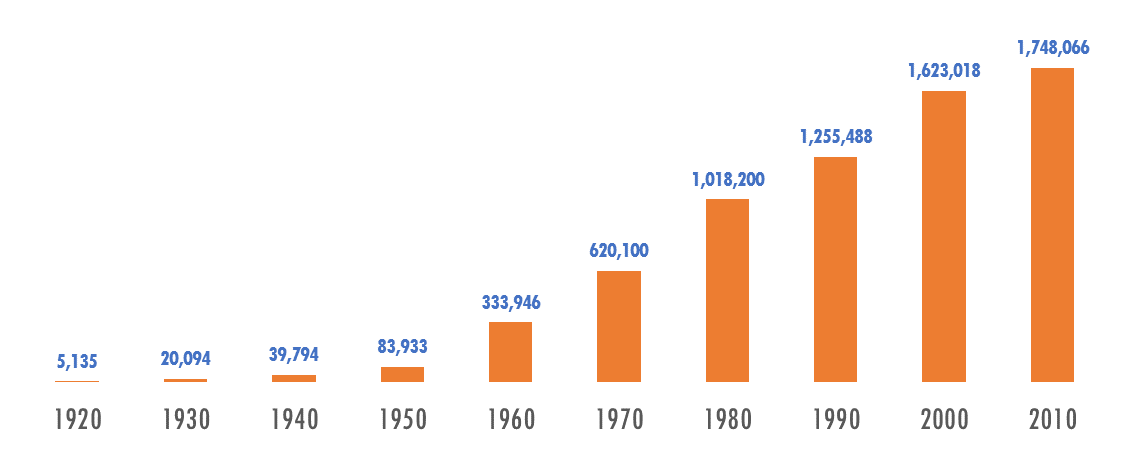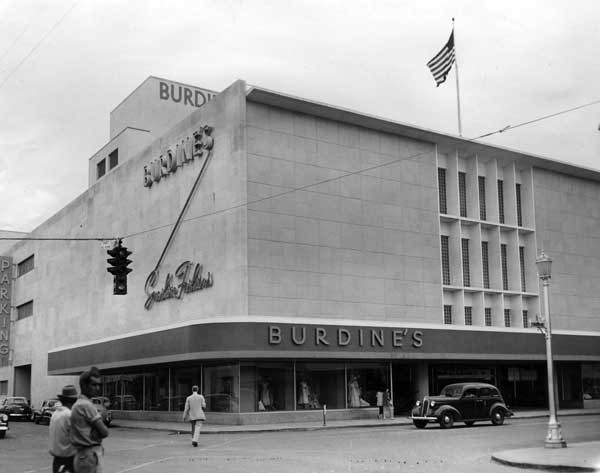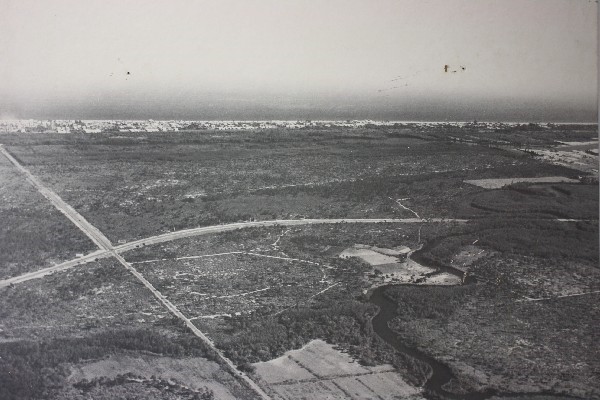History of Development in Broward County
To understand where we are headed, it is important to take a look back and review how we got here. To begin with, the area was not particularly accessible, until Henry M. Flagler learned that Miami was unaffected by the great freeze of February 1895 and decided to extend the Florida East Coast (FEC) railroad south from Palm Beach. On February 22, 1896, the first train reached the New River. Two decades later in 1915, Broward County was established, formed from portions of Dade and Palm Beach Counties. The county was named after former Florida governor Napoleon Bonaparte Broward, who was instrumental in implementing the canal system that crisscrosses the region to help maintain today’s built areas high and dry.
Dania became the area's first incorporated community in 1904, followed by Pompano in 1908 and Fort Lauderdale in 1911. Before 1920 most settlers were farmers, but the newcomers were urban people, many of them retirees. The 1920s witnessed the emergence of beach tourism as a major facet of the Broward economy.
Broward County's Population Growth

While development and population growth slowed during the 1930s, this slowdown was short lived. World War II had a direct effect on the county, most significantly, with the plethora of training bases that were established. Every airfield in the County was converted into a World War II training facility, one of them became the future site of Broward College's central campus in Davie. The years following the war were incredible boom times across the county. In the 30 years from 1940 to 1970, Hollywood increased almost 17-fold from 6,239 to 106,873 residents. Fort Lauderdale grew from 17,996 to 139,590, followed by, Pompano Beach from 4,427 to 38,587, and Hallandale from 1,827 to 23,849. Plantation, which was just getting started in 1950, grew to 23,523 by 1970.

Broward County Governmental Center at S. Andrews Ave. and SE 2nd St. when it was still a Burdine's Department Store, 1949 (Source: History Miami)
In addition to population growth, the number of municipalities increased dramatically during these years. Lauderdale-by-the-Sea incorporated in 1951, followed by Plantation and Lazy Lake in 1953, Margate and Miramar in 1955, Lighthouse Point in 1956, Pembroke Park in 1957, Lauderhill, Cooper City, Sea Ranch Lakes, and Pembroke Pines in 1959, Sunrise, Davie, and Lauderdale Lakes in 1961, North Lauderdale, Coral Springs, Parkland, and Tamarac in 1963 and Coconut Creek in 1967. This totals 19 new cities in just a 16-year period.

Oakland Park Boulevard and US 1 intersection, 1953 (Source: Broward County Historical Archives)
As the county's population quickly grew toward one million, a growing number of residents feared that rapid growth would bring to their new homes those problems which they had left behind. As the 1970s began, many residents wanted their cities to opt for slower growth and lower limits on the number of residences allowed per acre. Gradually, governments began to respond, and many of the land use patterns we see today are a direct result of this—car-friendly, spread-out design.
By 1976, the building industry began to pick up. With it came a concern that the uncontrolled and, sometimes, unwise growth that characterized the past would not be repeated. A new county charter gave Broward's government broad powers to monitor and improve the quality of life and the environment. The passage of the 1977 Land Use Plan was a major step toward limiting urban sprawl and insuring that the area's resources would be protected and put to their best use.
Since then, Broward County and its municipalities have realized that some land use decisions of the past have led to the transportation issues facing us today. By adding a new focus on compact development in areas such as Transit Oriented Corridors and Regional Activity Centers, uses are allowed to be placed closer together to promote more walkable environments. Placing higher densities and more employment in close proximity to mass transit corridors promotes healthier lifestyles and helps reduce the costs associated with owning cars, and building more and wider roads. Helping to contain growth within specified boundaries also supports protection of our natural resources.
More recently, local governments have also converged on the impacts of climate change. Broward County has adopted policies and is leading regional, state and federal conversations to adapt to these challenges and become a climate resilient community. But there is more to be done. We are currently taking on this important step to look at the land use plan that was adopted in 1977 and reevaluate it to be able to welcome the future with better tools and strategies.
